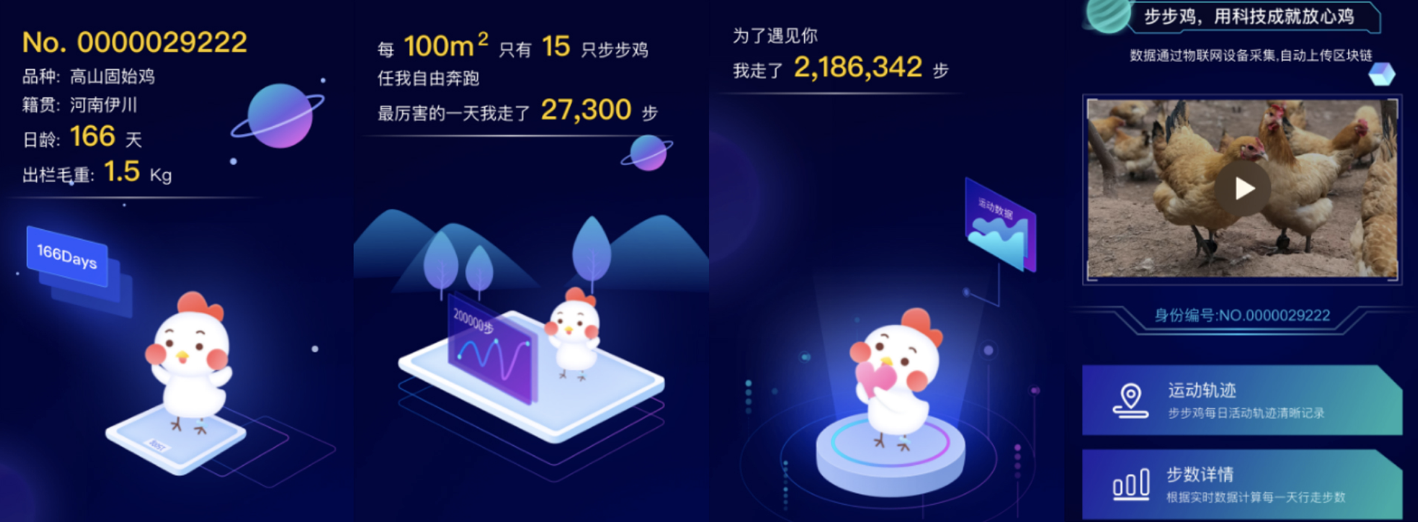Considering the serial food scandals the country had to deal with during the past few years, Chinese people put food security as the national priority. Even the food industry is making efforts, Chinese consumers don’t rely a lot on what’s on the packaging description. Nowadays, even the latest technologies such as AI and blockchain are participating in the food safety matter, to show how it is becoming important. This article will give you the latest activities in the Chinese food sector and an overview of opportunities for food business in China.
When technology comes to support Chinese farmers
Bubuji project: To breed chickens on the blockchain
While in local supermarkets, regular chickens are usually sold for around 60 yuan, the price for a “gogochicken” is almost 4 times higher. The frozen ones are sold for 238 yuan (about 37$) each and the chilled ones for 268 yuan.
Gogochicken is an agricultural product that was bred in a privileged way. Backed by Zhonghan Technology and Anlink, this project consists to breed chicks featuring blockchain’s immutability and traceability in order to provide premium chicken to consumers. Chicks are kept indoors with heating facilities until they grow larger and then they are freed into free-range farms, each enjoying a space of 6.7 square meters. They will mature in 166 days while the regular chickens do in 40 days.
Each chicken released outdoors has a wearable attached to its legs which tracks its daily activities. Since all the data is secured by blockchain, it’s impossible to counterfeit. When consumers receive their chicken, they can scan an attached QR code to see its description which includes: the variety, the age, the weight, the number of steps the chicken walked. (It can seem a little bit weird as the introduction is almost touching: « to meet you, I have walked 2,186,342 steps »). Also, all information on the chicken farms is available online and this can prove the quality of the chicken.

Alibaba’s Agriculture brain: To support pig farms with AI
Alibaba Cloud launched on May 7th, 2018 its ET Agriculture Brain platform to support China’s farmers by increasing their efficiency. Using visual recognition, voice recognition, and environmental parameter monitoring, the technology will help farmers to oversee animals on a farm in real-time. According to the company, it will reduce the disease rate and unnatural death, increase pig’s ability to produce newborns by three piglets per year and so improves farming efficiency.
Besides increasing farmers’ revenue, the higher agricultural output will also enable to reduce prices and improve safety for consumers.
Through these 2 projects, we can see that China is putting paying high attention to food production and safety as the consumption is upgrading. Also, the country is seeking a solution to help the development of rural areas and to provide farmers with new tools.
How to market your business in China’s food industry?
For foreign entrepreneurs or companies who want to enter China, they have already the advantage to be from abroad. Nowadays, imported products remain popular in China, considered more authentic and using more good quality ingredients than local foods.
Ensure your product’s traceability
With the consumption upgrade, but also the several scandals that happened in the past, Chinese consumers are becoming more and more careful about what they are eating. It is an added value if there is information about your product traceability besides the ingredient list. It can also be a solution to advertise your product.
Sell on trusted e-commerce platforms
China, thanks to the booming development of e-commerce in China, more and more people are turning to fresh food apps for their daily shopping. Chinese consumers are more willing to purchase online because of the convenience and the greater range of available items on e-commerce platforms. Among foods purchased online, fruit is the most frequently bought. Dairy products and vegetables ranked second and third, respectively. Fresh food e-commerce developed rapidly.
Nowadays, Chinese consumers have a huge appetite for foreign products and e-commerce platforms have become the channels of choices for Chinese shoppers looking to purchase such items. However, they won’t go to any eCommerce website because of the problem of counterfeit products in China. Only a few are used by most of the Chinese people.
Among them, there is Tmall, the Chinese e-commerce titans. We can help you to settle your business on these platforms. Click here for more information.
Building Brand through Wechat community
WeChat is a network that started life as a messaging app, mainly for P2P. Nowadays it reached over 1 billion monthly Active Users and this is not only due to its communication function. WeChat is a huge ecosystem, which can be used in many ways by companies. For example :
- companies can create their WeChat official account to provide their consumers information on their brand or their activities.
- It is possible to advertise through WeChat posts (like tweets) or implement a customer service in WeChat
- You can also launch a WeChat store, allowing consumers to purchase directly through their WeChat pay (a leading mobile payment system in China)
China is a digitalized society where almost everything can be done online. To enter this market, you need to know well Chinese consumers’ habits because they can differ a lot from another country due to digitalization. Opportunities are numerous in China but as the country is developing fast, only the ones acting early can make a profit.
GMA is specialized in digital marketing in China. Our agency offers a complete range of services for e-commerce marketers from e-commerce consulting to digital marketing operations. We have developed many successful e-commerce projects because we know how to effectively promote your e-commerce business in China by using the latest digital tools.
Do not hesitate to contact us for more information if you have a project to develop in China 😉
Articles related :










